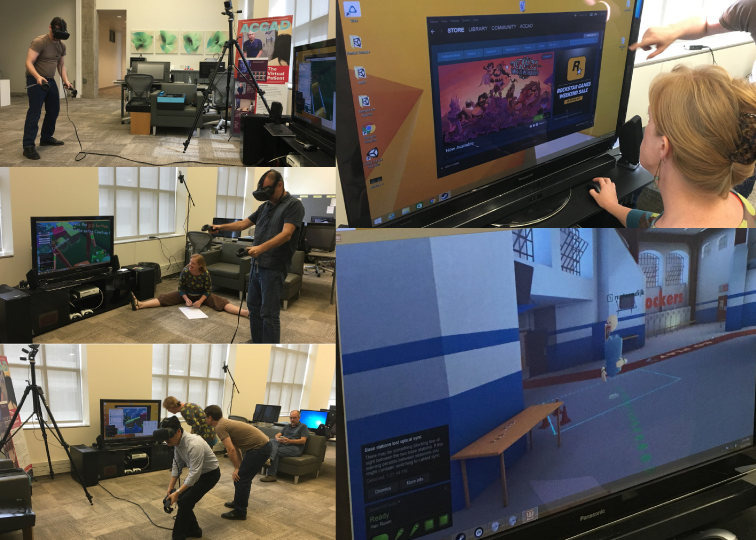As the Humane Technologies research team first began contemplating the 2016-2017 "Livable Futures" theme in Autumn semester, we held a series of sandbox sessions in the ACCAD labs and studios, each led by a different team member. The purpose of these sandboxes was to engage in a "doing thinking" process together with various humane technology frameworks in order to explore potential lines of inquiry, develop research questions, and build relationships. What follows are notes developed in conjunction with this particular sandbox session.
Sandbox: VR Playdate with Alex Oliszewski
Friday, September 23, 1-4pm in the ACCAD collaborative space (aka the living room)
Attendees: Ben McCorkle, Norah Zuniga Shaw, Alan Price, Peter Chan, Alex Oliszewski, John Welch
Anticipation / Expectation:
• Getting started by experiencing a wide range of VR games that invite full body motion, allow creative open-ended play, explore space and the brain's sense of motion and ask how they might be re-performed or hacked for artistic creation.
• Connection and creativity in VR, and pushing at what they can do.
Disposition / Experience:
• Tension between my body’s sense of space and the actual range in which I have to move (players “backing up” in order to see something better in certain game environments). Issue of scale. Teleporting is dissatisfying.
• Certain actions in the game inspire level changes and Tilt Brush is amazingly as inspiration for motion. It is great to watch people draw in 3D space.
• Play between what is happening virtually and in physical space/time and learning the etiquette of VR takes time.
• Play between what the brain understands as actual experience is an on-going question including the potential for manipulation, illness, changing experience forever (matrix dystopias).
Reflection / Opportunity:
• What inspires motion in these VR environments and what kinds of motions do we want to encourage if any?
• If post-human is not anti-human then how indeed might we want these technologies to evolve?
• How locomotion and teleporting in VR impact the sensation of space? What would be better?
• What are the inspired desires for multiple sensors on the body in the VR environment?
• How might knowledge in the performing arts be used to enhance embodied creativity in virtual spaces?
• What about experiential process in dance and things that are paced for exploration and self-discovery?
• How can we use the potential for manipulation in VR (particularly the brain’s sense of motion) as a space for play and well-being?
• What about world creation in virtual environments and using dance improvisation scores as world builders?
